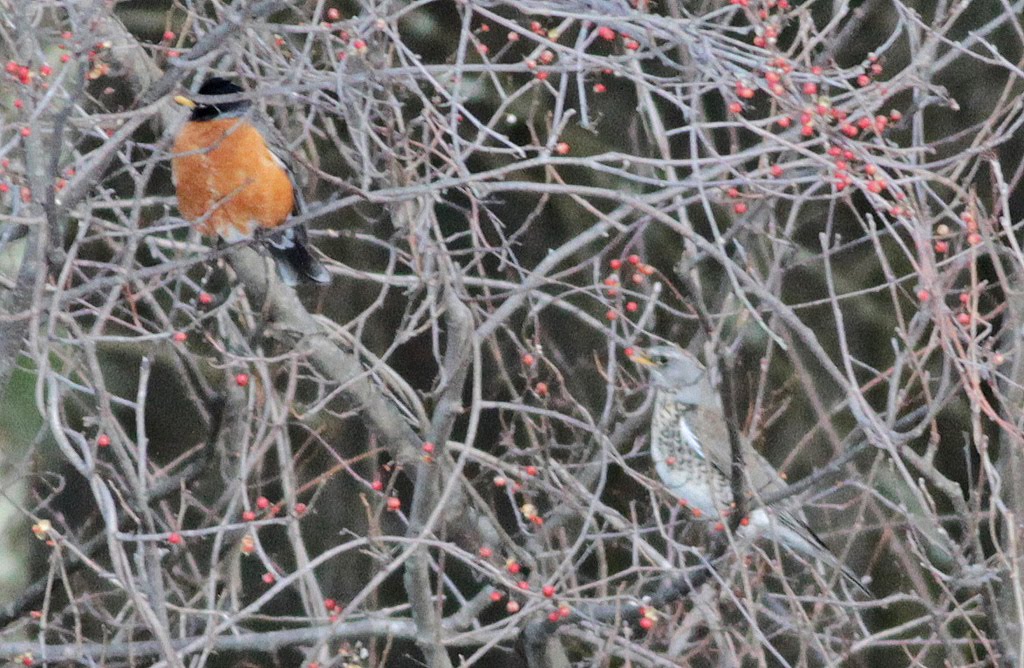
17 Mar 2013. Carlisle, MA. Photo by Ian Davies.
2 records
| MARC number | Decision | Species | # | Location | County | Arrival | Departure | Observers | Report |
|---|---|---|---|---|---|---|---|---|---|
| 1986-004 | A | Fieldfare | 1 | Nine Acre Corner, Concord | Middlesex | 4/6/1986 | 4/14/1986 | R. Richards | 13 |
| 2013-010 | A | Fieldfare | 1 | Greenough Conservation Land, Carlisle | Middlesex | 3/17/2013 | 3/23/2013 | A. Ankers* (ph) | 17 |
Fieldfare is a widespread European species, breeding from s. Greenland, Scandinavia, n. Russia and n. Siberia south to central Europe and central Russia, s. Siberia, and Lake Baikal. It winters from Iceland and the British Isles s. to the Mediterranean and the Middle East. It is strictly a vagrant in North America. See eBird map.
WHERE TO LOOK IN MASSACHUSETTS: Since almost all Fieldfare records from North America hail from the Northeast between December and April, those would be the best months to seek this species in Massachusetts. Large American Robin (Turdus migratorius) flocks coming to fruit should be checked carefully, especially in late winter when flocks from Atlantic Canada may move south into the region. Similarly, spring aggregations of robins in fields are probably often ignored by birders, but have the potential to turn up Fieldfares (as for the lone Massachusetts record) Redwing (Turdus iliacus), or even other rarities. Flyover Fieldfares might be detected among a flock of robins by their white wing linings.
STATUS IN THE EAST: Fieldfare had about 29 records for North America through 1998 (Green 1998), averaging about one per year since 1980. Although most records are from Atlantic Canada or Alaska (four summer records), there is a record from as far west as Minnesota (3-10 Nov 1991) and at least four along the St. Lawrence River Valley. Other East Coast records hail from Connecticut (Apr 1878), New York (February 3-12, 1973), and Delaware (March 30-April 4, 1969). See Green (1998) for a full discussion of Fieldfare in North America.
IDENTIFICATION NOTES: In mid-summer, juvenal-plumaged American Robins (Turdus migratorius) are often mistaken for Fieldfares by novice birders. Since mid-summer is an extremely unlikely time of year for a vagrant Fieldfare, these reports are usually easily dismissed. American Robins lose their spotted plumage by October, so any report of Fieldfare from November to April (the most likely months to encounter one in Massachusetts) should be taken seriously. Watch for the white wing linings of Fieldfare in flyover flocks of robins. Green (1998) provides a detailed account of Fieldfare identification.
